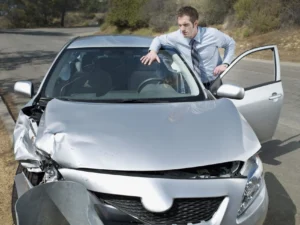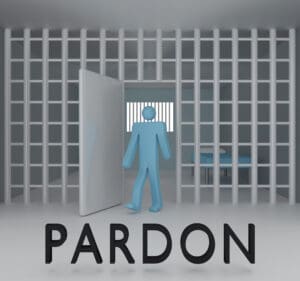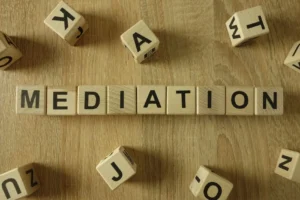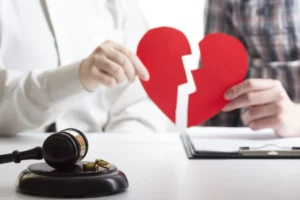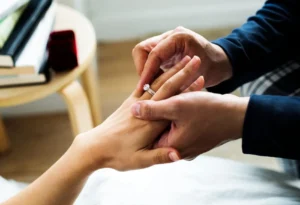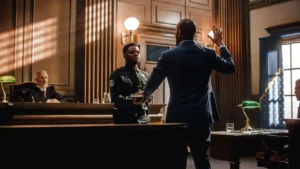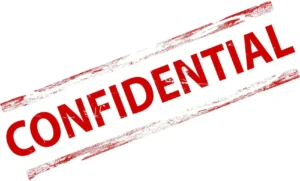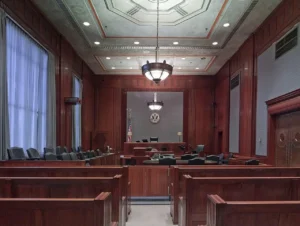Experiencing a California pedestrian accident can be overwhelming and disorienting. The aftermath can leave victims not only dealing with physical injuries but also navigating a complex web of legal and insurance processes. If you find yourself in this unfortunate situation, knowing what steps to take after an accident is crucial to ensuring that your rights are protected and that you can secure the compensation you deserve for your injuries.
Understanding the first actions to take following an accident can greatly influence the outcome of your claim. Here, we will delve deeply into the critical steps you need to follow, the legal implications you should be aware of, and the broader context of pedestrian safety in California.
Understanding Your Rights as a Pedestrian
As a pedestrian in California, you are afforded specific legal rights designed to protect your safety and welfare. The state places a high priority on pedestrian rights, and California law mandates that drivers yield to pedestrians, especially in designated crosswalks. When a driver neglects this responsibility, they may be held legally accountable for any injuries that result from their actions.
Understanding the legal concept of negligence is key to navigating your situation effectively. Negligence occurs when a driver fails to exercise reasonable care, leading to an accident that causes harm to another party. For instance, if a driver is distracted, speeding, or driving under the influence and causes an accident, they can be held liable for the injuries sustained by the pedestrian.
It is crucial to familiarize yourself with your rights and the legal framework surrounding pedestrian accidents. In California, pedestrians have the right to pursue compensation for damages incurred due to a driver’s negligence. This compensation can cover medical expenses, lost wages, pain and suffering, and more. To build a strong case, you will need to gather evidence, such as witness statements and police reports, to substantiate your claims.
Immediate Steps to Take After an Accident
When a pedestrian accident occurs, the moments that follow can be critical. Your immediate actions can have significant implications for your health and your potential claim.
Seek Medical Attention
Your health should always be your primary concern after an accident. Even if you feel fine, seeking medical attention is crucial. Many injuries, including concussions and internal injuries, may not present symptoms immediately. A healthcare professional can conduct a thorough examination and document any injuries sustained during the incident.
Medical documentation will be vital in substantiating your claim. It not only provides evidence of your injuries but also helps establish a timeline for your recovery. Follow-up appointments, treatment plans, and medical bills should all be carefully documented. This information will be invaluable when negotiating with insurance companies or pursuing legal action.
Document the Scene
While waiting for medical assistance, if you are able, documenting the accident scene is essential. Take photographs of the location, including any traffic signs, signals, and the position of vehicles involved in the accident. Capturing the conditions of the road and visibility can also provide context to your case.
Additionally, collecting contact information from witnesses can bolster your claim. Eyewitness accounts can provide corroborating evidence of how the accident occurred and help establish fault. Record statements from these witnesses, if possible, and make sure to write down their contact information.
Reporting the Accident
After ensuring your immediate health and safety, the next step is to report the accident to the authorities. Calling the police to file an official report is important for both legal and insurance purposes.
What to Include in Your Report
When speaking with the police, provide accurate and honest information. Include details such as the time, date, location, and circumstances surrounding the accident. If you sustained injuries, be sure to inform the officer, as this will be included in the official report.
An official police report can serve as a crucial piece of evidence in your case. It typically contains statements from involved parties and witnesses, descriptions of the accident, and any citations issued. This documentation can significantly aid in establishing liability and strengthening your claim.
Engaging Legal Help
The legal landscape following a pedestrian accident can be complicated and overwhelming. Seeking assistance from a qualified personal injury attorney who specializes in pedestrian accident cases can help you understand your rights and the processes involved.
Why You Need an Attorney
Insurance companies often aim to minimize payouts, and without legal representation, you may find it challenging to negotiate a fair settlement. An attorney can provide guidance on the steps you should take, help you gather necessary evidence, and navigate the complexities of dealing with insurance companies.
Your attorney will also ensure that you meet all deadlines for filing claims, which can vary based on the specifics of your case. In California, the statute of limitations for personal injury claims is generally two years from the date of the accident. Failing to file within this timeframe can result in losing your right to pursue compensation.
Building Your Claim
Filing a claim for a pedestrian accident involves several essential components. Understanding these elements can empower you as you navigate this complex process.
Gathering Evidence
As previously mentioned, collecting evidence is crucial to your case. This includes obtaining your medical records, witness statements, photographs from the accident scene, and the official police report. Additionally, keep a record of all medical treatments and expenses related to your injuries.
Documentation of your injuries, treatments, and any related expenses will play a significant role in establishing the extent of your damages. This comprehensive collection of evidence will support your claim and help you pursue the compensation you deserve.
Filing a Claim with Insurance
Once you have gathered sufficient evidence, your attorney can assist you in filing a claim with the responsible party’s insurance company. Prepare for the insurance company to conduct its investigation, which may involve reaching out for statements or additional information. It is crucial to communicate through your attorney, as miscommunication can negatively impact your claim.
Negotiating a Settlement
After filing your claim, the insurance company will review the evidence and may propose a settlement. Often, this initial offer is significantly lower than what you deserve. Your attorney will negotiate on your behalf to secure a more favorable settlement that accurately reflects your injuries and damages.
Negotiation may involve back-and-forth communication with the insurance adjuster, and it is essential to remain patient during this process. Your attorney will advocate for your best interests, ensuring that you receive a fair settlement that compensates you for all damages incurred.
Litigation
If negotiations fail and you are unable to reach a satisfactory settlement, your attorney may recommend pursuing litigation. This involves filing a lawsuit against the at-fault party and taking your case to court. While litigation can be a lengthy process, it may be necessary to achieve the compensation you deserve.
Your attorney will guide you through each stage of litigation, including discovery, depositions, and trial. During this process, it is essential to remain involved and informed about the developments in your case.
Types of Damages You May Claim
When filing a claim after a pedestrian accident, it’s essential to understand the different types of damages you may be entitled to. These can include:
Economic Damages
Economic damages refer to tangible losses resulting from the accident. This includes medical expenses, rehabilitation costs, lost wages due to time off work, and any future medical expenses related to your injuries. Keeping detailed records of all these expenses will strengthen your claim.
For instance, if you require ongoing physical therapy or rehabilitation, documenting these costs will provide evidence for your claim. Your attorney can help you calculate your total economic damages based on your medical bills and lost income.
Non-Economic Damages
Non-economic damages cover the emotional and psychological impact of your injuries. This includes pain and suffering, loss of enjoyment of life, and emotional distress. While these damages can be challenging to quantify, your attorney can help present evidence supporting these claims.
For example, if your injuries have limited your ability to engage in activities you once enjoyed, such as sports or hobbies, this can significantly impact your quality of life. Your attorney can work to ensure that this loss is accurately represented in your claim.
Understanding Comparative Negligence in California
California operates under a comparative negligence system, which means that if you are found to share some fault in the accident, your compensation may be reduced based on your percentage of fault. For example, if you were found to be 20% at fault for the accident, your total compensation would be reduced by that percentage.
Understanding how comparative negligence works is vital as it can affect your claim. The more evidence you have demonstrating the driver’s negligence, the stronger your case will be against any allegations of shared fault. This highlights the importance of collecting solid evidence to support your claim.
Importance of Evidence
Collecting thorough evidence is crucial in establishing fault. If the driver can prove that you contributed to the accident, this could impact your claim. Therefore, obtaining witness statements, photographs, and the police report is critical in supporting your case and countering any claims of shared negligence.
Common Injuries from Pedestrian Accidents
Pedestrian accidents can lead to various injuries, some of which may be severe and life-altering. Understanding common injuries can help you recognize the importance of seeking medical attention.
Traumatic Brain Injuries (TBIs)
Traumatic brain injuries can occur when a pedestrian is struck by a vehicle. Symptoms may not be immediately apparent, but they can lead to long-term complications, including cognitive impairments, memory issues, and emotional changes. Treatment may involve rehabilitation and ongoing medical care, making proper documentation essential for your claim.
If you suspect you have sustained a TBI, seek medical attention immediately. Documenting any symptoms and receiving a formal diagnosis will strengthen your claim for compensation related to this serious injury.
Broken Bones and Fractures
Fractures are common in pedestrian accidents, particularly in the legs, arms, and pelvis. These injuries often require surgery, lengthy rehabilitation, and may hinder your ability to work or engage in daily activities.
Keeping thorough medical records and documenting the impact of these injuries on your life will be crucial in substantiating your claim. Additionally, any future medical needs, such as physical therapy or follow-up appointments, should be documented as well.
Soft Tissue Injuries
Soft tissue injuries, including sprains, strains, and contusions, can result from pedestrian accidents. These injuries can cause pain and limit mobility, necessitating medical treatment and rehabilitation.
While soft tissue injuries may not always appear as severe as fractures or TBIs, they can significantly affect your quality of life. Proper documentation of medical visits, treatments, and recovery progress will be essential for your claim.
Emotional and Psychological Injuries
In addition to physical injuries, pedestrian accidents can lead to emotional and psychological injuries, such as anxiety, depression, and post-traumatic stress disorder (PTSD). These conditions can significantly impact your quality of life and may require professional treatment.
Documenting any mental health symptoms and seeking therapy will support your claim for non-economic damages related to emotional distress. Mental health professionals can provide valuable documentation regarding your condition, treatment, and the impact on your daily life.
Navigating Insurance Claims
Navigating the insurance claims process can be one of the most challenging aspects of recovering from a pedestrian accident. Insurance companies often prioritize their bottom line, which can complicate your ability to secure a fair settlement.
Communicating with Insurance Companies
After an accident, the at-fault driver’s insurance company will likely reach out to you. It is crucial to remember that their primary goal is to minimize their payout. Avoid making any recorded statements or signing documents without consulting your attorney first.
Insurance adjusters may attempt to pressure you into accepting a quick settlement. While it can be tempting to resolve the matter quickly, it’s essential to allow your attorney to evaluate the offer and negotiate on your behalf. They can help you assess whether the settlement adequately covers your medical expenses, lost wages, and pain and suffering.
Understanding Your Policy
If you have personal injury protection (PIP) or uninsured/underinsured motorist coverage, this can also play a role in your claim. Understanding the specifics of your policy and how it applies to your situation is vital. Your attorney can help you navigate the intricacies of your insurance policy and maximize your compensation.
Preparing for Possible Trial
If your case cannot be settled through negotiation, it may proceed to trial. While this is not common, it is essential to be prepared for the possibility.
The Trial Process
The trial process typically involves several stages, including jury selection, opening statements, presenting evidence, witness testimony, and closing arguments. Your attorney will represent you throughout this process, advocating for your best interests.
What to Expect
Preparing for trial can be a lengthy and emotionally taxing process. Your attorney will work to gather all necessary evidence and prepare you for witness testimony, should it be required. Understanding the trial process can alleviate some anxiety and help you feel more prepared.
Conclusion
Navigating the aftermath of a pedestrian accident in California can be daunting, but understanding the steps to take can empower you to advocate for your rights and secure the compensation you deserve. From seeking medical attention to engaging legal help, each action you take plays a critical role in the success of your claim.
If you’ve been injured in a pedestrian accident, do not hesitate to seek assistance from a qualified personal injury attorney. Their expertise can guide you through the complexities of the legal system, help you gather essential evidence, and ensure that you receive the compensation necessary to aid your recovery.
In California, pedestrian safety is a top priority, and the law is on your side. By taking the appropriate steps, you can navigate this challenging time and work toward healing and recovery.






